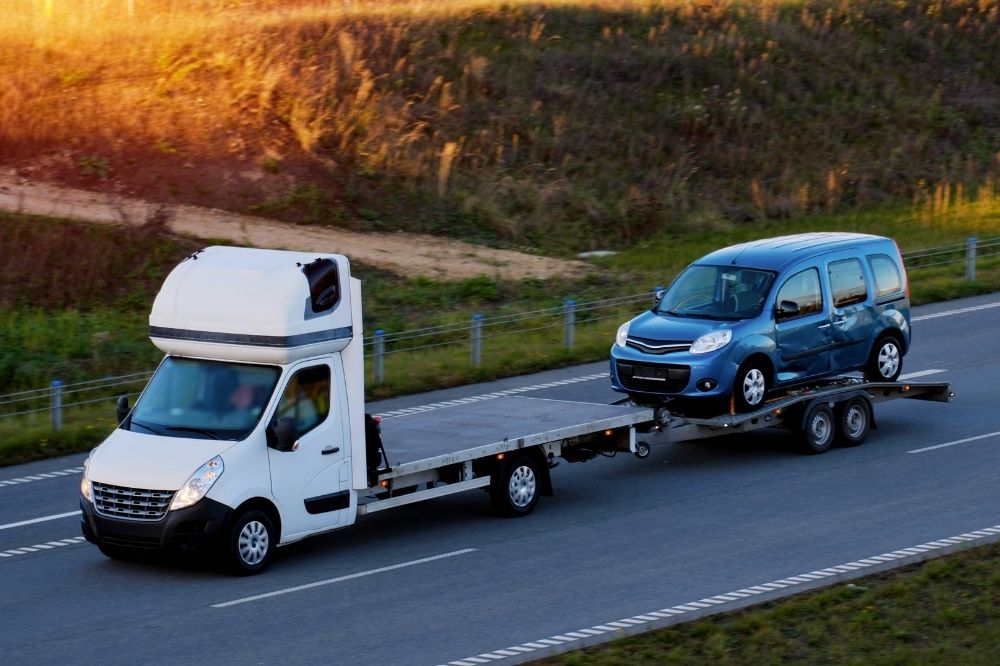For truckers, the road is full of risks, and one accident can derail your income and future. Trucking is one of the top ten most dangerous occupations in the US. Occupational accident insurance for truckers offers an excellent safety net for owner-operators to stay protected when the unexpected happens.
Navigating the world of insurance can be tricky, and as a trucking operator, there are many different insurance policies and coverages to consider.
So, what exactly is occupational accident coverage and do you need it? This guide covers what you need to know.
What is Commercial Truck Driver Occupational Accident Insurance?
Occupational accident insurance for truckers is supplemental insurance designed for independent truck drivers, especially owner-operators under 1099 contracts.
It provides insurance coverage for work-related injuries and accidents, including medical expenses, lost wages, and disability. This insurance helps protect drivers who might not have traditional workers’ compensation coverage for an occupational accident.
It’s ideal for truckers working under their authority or contracted by motor carriers.
How Does Occupational Accident Insurance for Trucking Work?
Occupational accident insurance provides financial protection for independent truck drivers injured while working.
This insurance covers costs if a driver suffers injury while loading cargo or is involved in a delivery collision. Policies have coverage limits which are often between $500,000 and $2,000,000.
For example, if a trucker slips and falls while securing a load and suffers an injury, the insurance would cover their medical bills and possibly lost wages while they recover. Some policies even provide disability income.This safety net protects drivers and independent contractors lacking workers’ compensation coverage.
This type of insurance is not required by law. However, many motor carriers encourage or require it for independent contract drivers to ensure they’re protected from work-related accidents.

Who Needs Occupational Accident Insurance?
If you’re an independent truck driver, especially an owner-operator or a 1099 independent contractor, then you need occupational accident insurance.
This industry insurance is essential for those not covered by workers’ compensation who want protection from work-related injuries. Drivers working under their authority or contracted by motor carriers often rely on this insurance for financial security.
The trucker usually pays the cost of coverage, especially if they’re self-employed. However, in some cases, the motor carrier offers this insurance at a discounted rate or even covers the cost as a benefit to attract and support independent contractors.
What Does Occupational Accident Insurance Cover?
Occupational accident insurance for truckers provides comprehensive coverage for injuries or accidents while performing work-related duties.
Traditional workers’ compensation programs don’t cover independent truck drivers, including owner-operators, so this insurance is crucial for them.The policy typically includes a range of benefits, such as:
- Medical Bills: Covers necessary medical treatments after an accident, including emergency care, hospital stays, surgeries, rehabilitation, and ongoing treatment. This ensures that drivers do not face significant financial strain while recovering from an injury sustained on the job.
- Lost Wages: If an accident leads to the driver being unable to work, this benefit compensates for a portion of the lost income. This is particularly important for independent contractors who rely on their daily driving for income. The amount covered varies by policy but generally accounts for a percentage of the driver’s regular earnings.
- Disability Benefits: In the case of temporary or permanent disability resulting from a work-related injury, the policy provides benefits to help cover lost income.
The policy typically offers temporary disability benefits while the driver recovers and cannot work. Permanent disability benefits are paid if the injury leads to long-term or lifelong impairment, making it impossible for the driver to continue their work.

What Does Occupational Accident Insurance Not Cover?
Occupational accident coverage does not cover illnesses or injuries unrelated to work, like general health issues or non-trucking industry accidental injuries.
Occupational accident insurance policies also won’t cover damages or liability related to property, third-party claims, or other incidents outside the trucker’s occupational risk.
It’s not a substitute for health insurance, and in states where workers’ comp is required, an occupational accident policy cannot replace that coverage.
How Much Does Occupational Accident Insurance Cost?
Occupational accident insurance coverage typically ranges from $122 to $152 per month per driver, depending on the type of truck and the coverage limits. Smaller vehicles like cargo vans and sprinters are on the lower end of the cost range.
This insurance for truckers is more affordable than workers’ compensation because it offers less comprehensive coverage.
Occupational Accident Insurance vs. Workers’ Compensation Insurance
Occupational accident insurance is a cheaper alternative to workers’ compensation for independent truck drivers, like owner-operators.
Workers’ comp is state-regulated and provides broader coverage, including medical bills, lost wages, legal expenses, and ongoing care.
Occupational accident insurance is more limited, covering only up to the policy limits and excluding legal expenses.
Since workers’ comp laws typically don’t cover independent contractors, they often choose occupational accident insurance for basic protection.
Which States Can Owner-Operator Truckers Buy Occupational Accident Insurance?
Owner-operator truckers can buy occupational accident insurance in most states across the US. However, there are a few exceptions.
States like Connecticut, Maryland, Nevada, and North Carolina do not allow occupational accident insurance for truckers. In these states, truckers may need to explore alternative coverage options or workers’ compensation programs to protect themselves.
Other than the states above, truckers can get occupational accident coverage anywhere in the US.

How to Purchase an Occupational Accident Policy as an Owner-Operator
To purchase an occupational accident policy as an owner-operator, you’ll first need to contact a truck insurance professional who offers this type of coverage. Your agent will guide you through the process and get you to fill out and sign an application.
You’ll need to provide basic details like your name, date of birth, driver’s license information, and Social Security Number.
You’ll also need to share specifics about your truck type, years of experience in the trucking industry, the motor carrier you’ll haul for, and your medical plan carrier.
The application will require verification of your 1099 contractor status and details about the job duties you perform, like loading, unloading, or attaching trailers.
Once you’ve submitted this, the agent will help you choose a policy that fits your needs.
Final Thoughts
If you’re independent and don’t qualify for worker’s compensation insurance, having occupational accident coverage is incredibly important. You never know what might happen on the road, and being covered will give you valuable protection and peace of mind when needed.
If you’re an independent trucker, you’ll also need to know how to get financing for your commercial vehicle. Speak to us at Mission Financial Services – we make it easy for all owner-operators to access the finance to purchase a semi-truck.



























